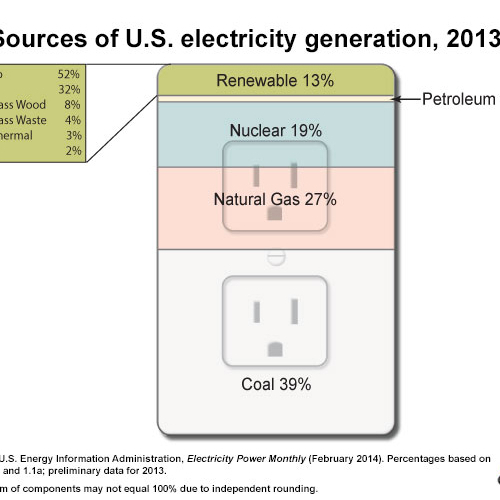
With a few holdouts, fuel oil dealers in the Northeast U.S. have completed a transition to ultra-low-sulfur heating oil (ULHO), a move that will bring a variety of environmental and practical benefits to both consumers and the industry.
Massachusetts, Maine, and Vermont this year are completing a switch to fuel oil that contains no more than 15 parts per million (ppm) of sulfur, wrapping up a transition that began in 2012 in New York State. The effort now includes every state in the region with the exception of Pennsylvania and Maryland, according to S&P Global.
Fuel oil is largely a regional fuel. According to the U.S. Energy Information Administration, 20% of Northeast households heat with fuel oil, representing 80% of U.S. consumers who do. In some states, the percentage of households using oil for heat is much higher. In Maine, for example, two-thirds of all households use oil as their primary source of heat, higher than in any other state, the EIA said.
In 2016, 3.1 billion gallons of home heating fuel were sold to residential users in the Northeast.
The 15 ppm sulfur content is equal to that in ultra-low-sulfur diesel used in some vehicles. Conventional heating oil has a sulfur content of 4,000 ppm.
Adoption has been on a state-by-state basis after a multi-state air quality compact called the Mid-Atlantic Northeast Visibility Union embraced the idea a decade ago. Some states lowered limits on sulfur in stages. Massachusetts, for example, went to 500 ppm sulfur in 2014 and didn’t fully adopt ULHO until this year. Maryland and Pennsylvania, the number two consumer in the region, still permit heating oil containing 500 ppm sulfur.
The change promises a number of environmental improvements, according to Clean Oil Heat NH, a trade group representing dealers in New Hampshire. They include reduced emissions of nitrogen oxide, sulfur oxide, and particulates, less ground-level ozone smog, and improved air and water quality.
Heating equipment will stay cleaner and last longer on a diet of ULHO, the group said, and as a result should operate more efficiently.
Movement started to benefit local dealers
The change to ULHO began as an effort to make life simpler for local oil retailers rather than as an environmental initiative, according to John Huber, president of the National Oilheat Research Alliance, an industry research group funded by a fee on wholesale oil sales.
In a telephone call, Huber said that in 1993 the U.S. Department of Environmental Protection developed low-sulfur requirements for on-road trucks, but opted not to include heating oil in the regulation. That, Huber said, made it impossible for oil dealers to use the same trucks to deliver both diesel for on-road vehicles and home heating oil. If the heating oil were delivered first and the truck refilled with diesel, there would be enough residual sulfur in the tank to contaminate the load of diesel, rendering it unsalable.
“There has been a desire on the part of retailers to realign the products so they are the same again,” Huber said.
The industry also saw a number of other advantages in the switch. Heating oil with a high sulfur content was causing some degradation in chimneys, and it has a tendency to gum up the heat exchanger in boilers and furnaces. Technicians, already in short supply, had to spend more time taking appliances apart to scrape out the gunk, and the sulfur is thought to lower the efficiency of appliances that burn it — on the order of 1% to 3% per year.
Finally, heating oil with lots of sulfur produced sulfuric acid in the secondary heat exchangers in high-efficiency condensing furnaces that were growing increasingly common. Huber said that the specialty steels that manufacturers were forced to use to protect the exchanger from the chemical could add as much as $2,000 to the cost of a single furnace.
Costs for consumers are probably a wash
ULHO is harder to produce than conventional heating oil, Huber said, because it has a “tighter spec” at the refinery, but it makes the equipment that uses it easier to make. Although Huber cautioned that oil pricing is dynamic throughout the year, and as a result somewhat “not decipherable,” consumers in the end should stand to gain.
“So maybe you pay 2 or 3 cents more a gallon to get it,” Huber said, “and you save 4 to 6 cents in higher efficiency appliances in your home. It’s kind of a wash, probably a benefit to the consumer. He’s paying a little more but he’s getting better quality, and he’s probably going to be using a little less.”
It isn’t clear why Maryland and Pennsylvania haven’t jumped on the bandwagon. The 500 ppm sulfur heating oil allowed in those states is much cleaner than what used to be on the market, but still a far cry from the 15 ppm oil being used elsewhere in the region. Emails to environmental officials in both states were not answered.
However, Ted Harris, the director of marketing for the Pennsylvania Petroleum Association, which represents oil dealers in the state, said by phone that 15 ppm heating oil would become the standard next year, as it will be in Maryland. ULHO is already being marketed in Philadelphia, a major metro area and the largest city in the state.
Why Philadelphia and not the rest of the state?
“Without going into the full story, there’s just been some legislative matters that have not gotten us to that level,” Harris said. “With that being said, we are on pace to be at 15 ppm by July 1, 2019.”
Weekly Newsletter
Get building science and energy efficiency advice, plus special offers, in your inbox.















One Comment
The cost increase to consumers is going to be far more than the claims in this article, and only those who install new equipment stand a chance to overcome that cost increase.
The author has completely ignored the effects of the upcoming shipping regulations on lower sulfur fuels
Log in or create an account to post a comment.
Sign up Log in